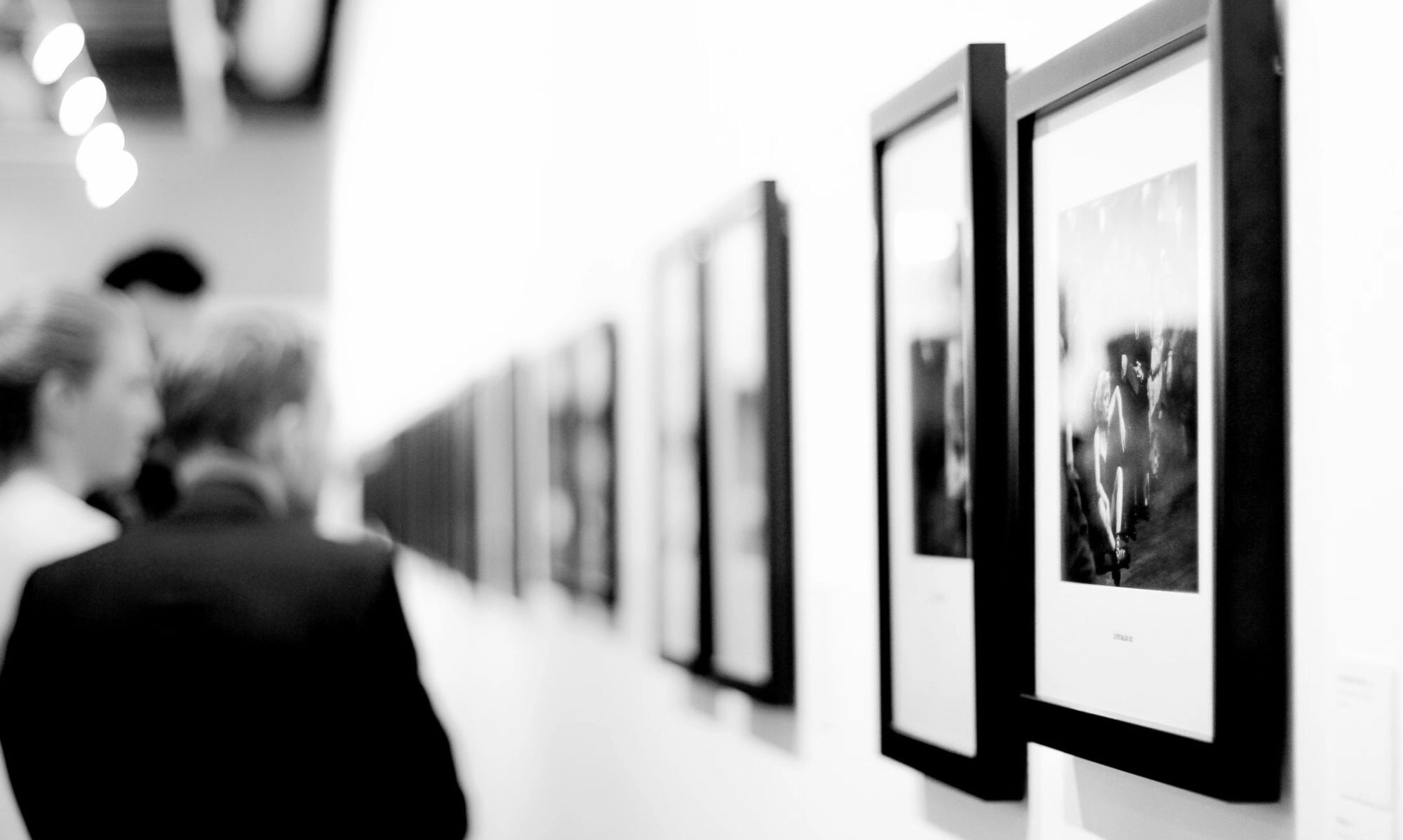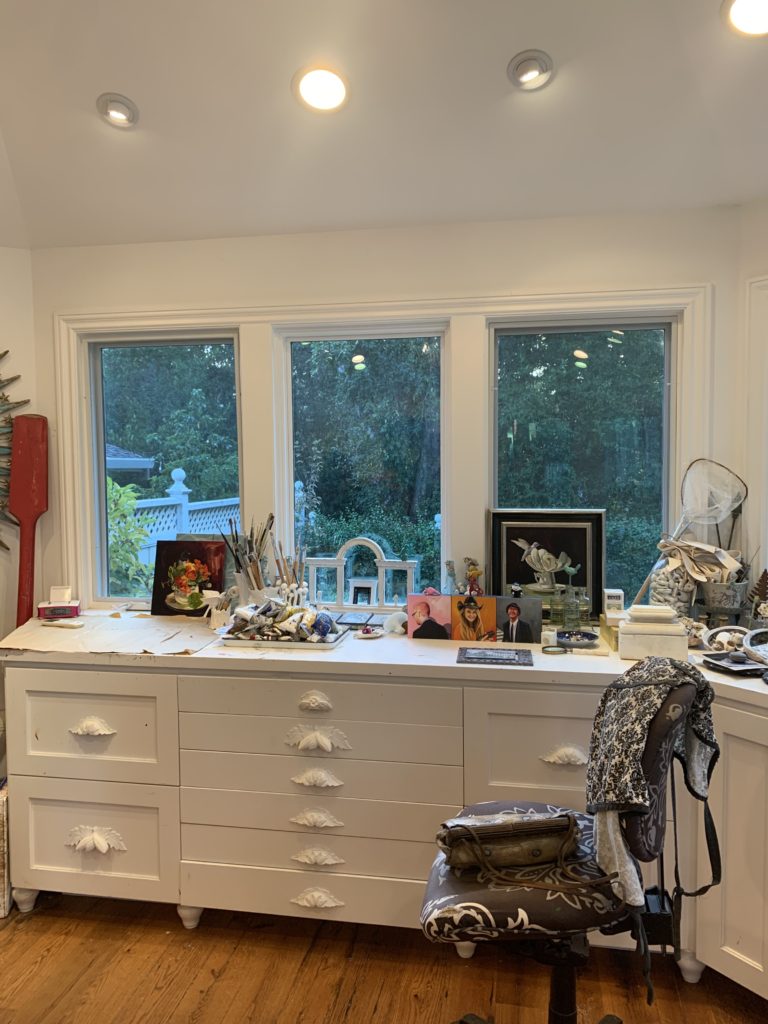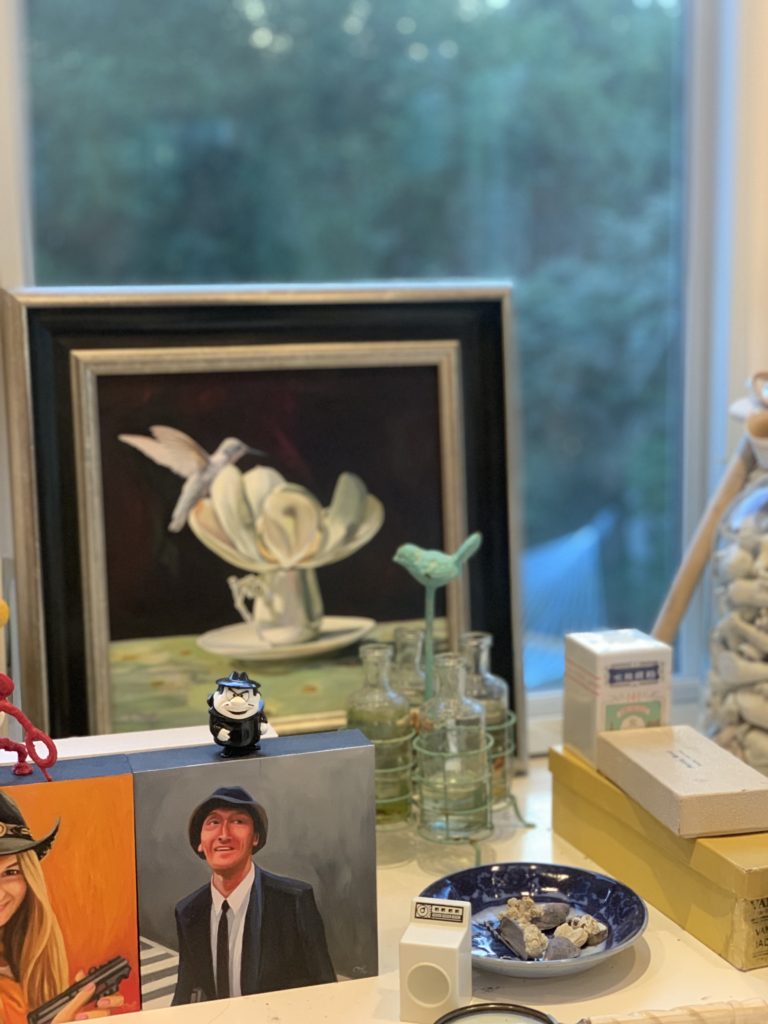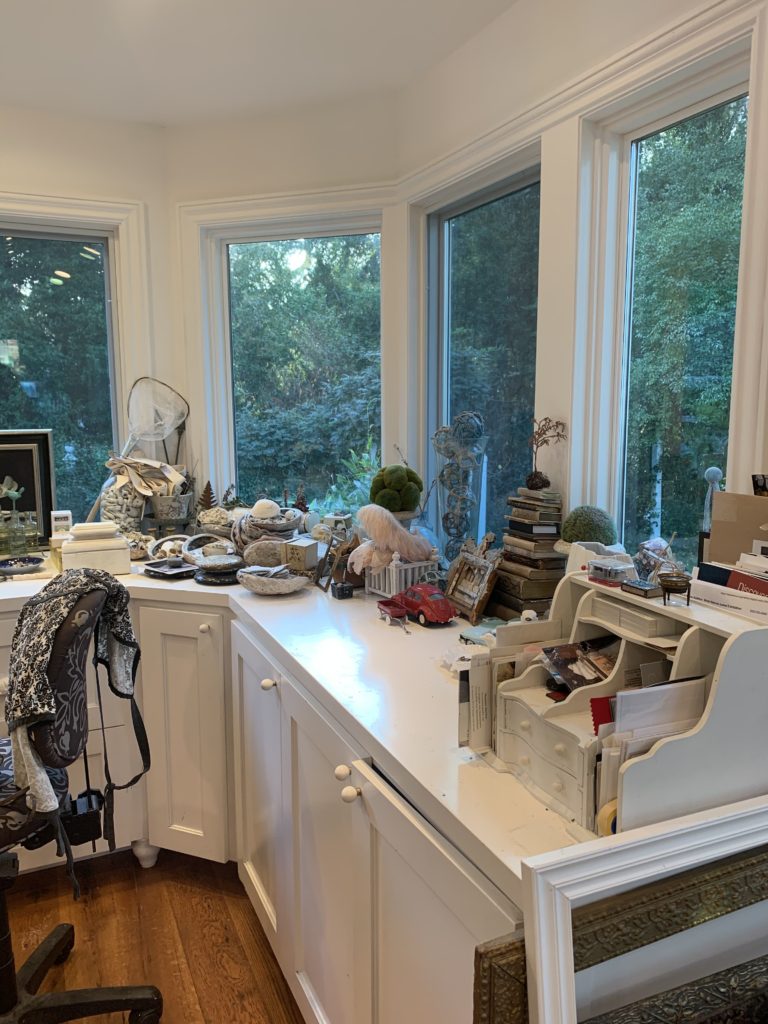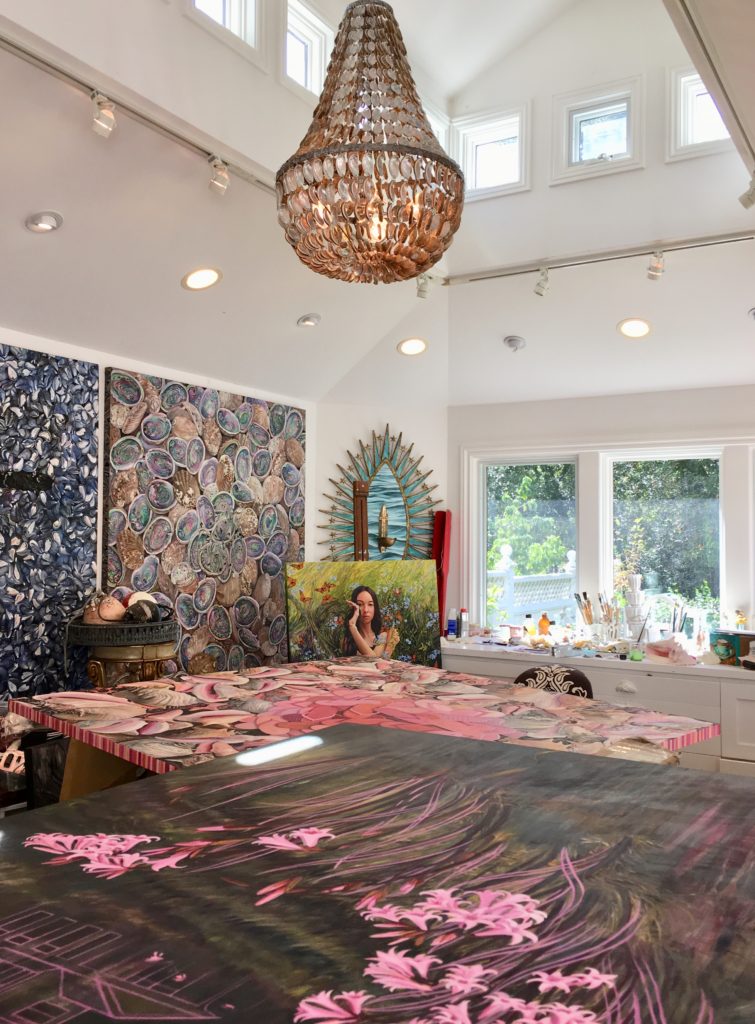31 Women – March 10th: Marie Cameron
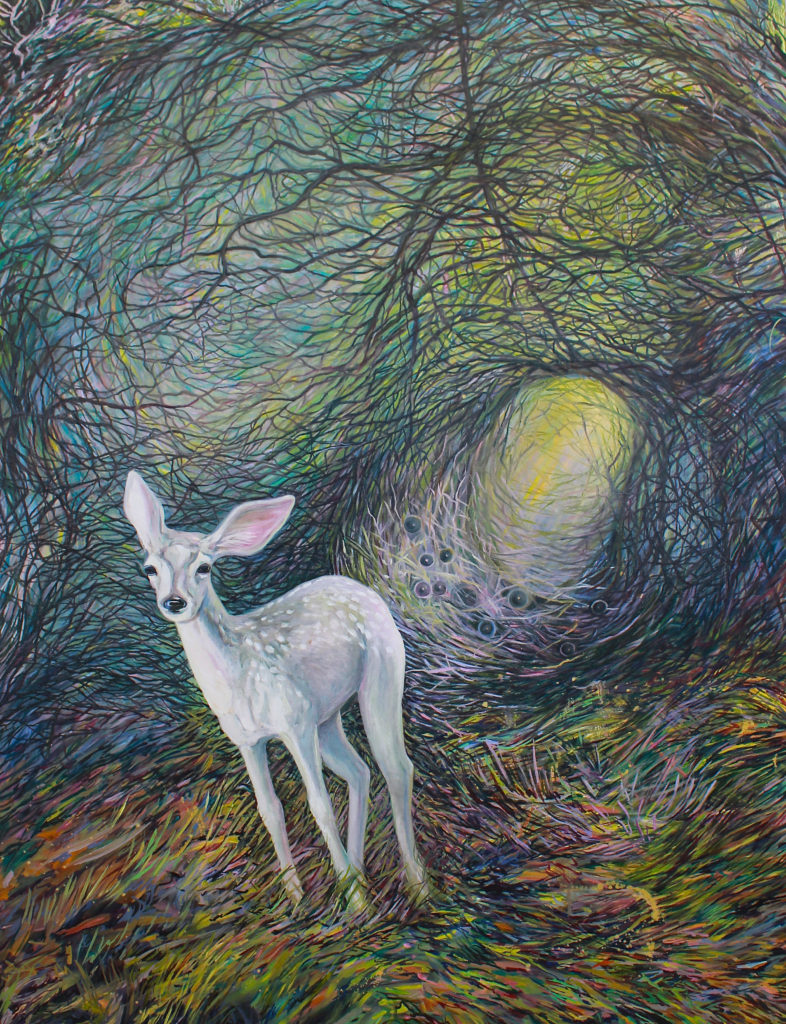
Periphery, 2020
Oil on canvas
An Interview with Marie Cameron
MKM: Tell me about your childhood, where did you grow up? Were you always creative? Why did you pursue art?
MC: Although I was born in NYC, I grew up in Maine and Nova Scotia, I had an idyllic childhood full of beachcombing for sand dollars and amethyst, canoeing on lakes and building forts in the woods. I lingered in orchards of apple blossoms, and hillsides of lupine. I gathered wild blueberries, blackberries and picked apples in the fall. In winter there was cross-country skiing and all year long there were crafts! My mother and grandmother taught me embroidery, sewing, crochet, quilting, rug hooking, rug braiding, block printing, refinishing furniture, woodworking and painting – there was always the sense that you could do anything! I loved drawing and painting the most, and though art was not available in our schools, I enjoyed the odd lesson, including watercolor classes by Mi’kmaq artist, Leonard Paul, and I was chosen for a summer art intensive at Acadia University conducted by Jeannie Edmonds Hancock and David MacNeil, culminating in a show opened by Alex Colville! Although I was always interested in going to art school, this one-on-one with these artists made me understand that it was possible to have a life as a working artist. I couldn’t not make art!
MKM: Where did you study?
MC: I earned my BFA from Mount Allison University in Sackville, New Brunswick, Canada where I majored in painting, and minored in sculpture and photography. I graduated with honors and was awarded a Lavina Esterbrooks Art Scholarship and later a Canada Council Explorations Grant.
MKM: Can you tell us about your memorable teachers?
MC: My teachers from University were all memorable in their own way, Thaddeus Holownia (photography), Rebecca Burke (painting), Tom Henderson (sculpture), David Silverberg (printmaking), John Asimakos (foundation), Dan Steeves, (printmaking), Terry Graff (sculpture), David Bobier (sculpture). Mount Allison allowed me the time, space and support to focus on developing my work and style.

MKM: When you’re creating what’s your daily routine? Rituals, patterns? How has your practice changed over time?
MC: My favorite thing is to have a long stretch of undisturbed time to work in my studio. I can see my studio beckoning me from my breakfast table and I like to get out there with a hot cup of coffee as soon as I’m fueled up! Ideally, it’s a Monday morning and I’m starting with a new canvas full of possibility, reference material (if needed) already printed out and gridded up, creamy paint squeezed out and clean brushes on hand. I like to listen to NPR, it keeps me connected and engaged without being obtrusive, it helps to keep me in the moment and in front of my easel. I am at my best in the morning, so I try to protect that quality painting time by scheduling all the other stuff (research, photography, prep, cleaning, applications, social media, appointments and gallery visits) for late afternoons, evenings and weekends where possible. I take breaks in my garden to stretch my body and eyes, to get some clean air and to see what’s blooming or why the birds are making a ruckus. It’s all about honoring the flow and showing up for it. Routines definitely change over time. When my children were small, I would snatch what time I could, turning artistic pursuits that were more child-friendly, like photography (in which they were often the subject). Currently, I like to rotate through my various series, working on something very large, followed by something very tiny, working with something very familiar, then playing with unfamiliar materials, this helps to keep things fresh.
MKM: Do you focus on a specific medium or combination of mediums?
MC: I am primarily an oil painter, working in imaginative realism, with the narrative taking precedence over the medium, but I also love to dabble in mixed media assemblage and even encaustic to explore and appropriate the intrinsic properties of various mediums and objects as part of the message, reinforcing the narrative.
MKM: Which creative medium would you love to pursue but haven’t yet?
MC: I was given some exquisite crushed shell pigment from Japanese artist, Hiroko Ohno, which she uses in her amazing Galaxy paintings. I am saving it for something special, perhaps a mixed media painting; an ode to the ocean.
MKM: What themes do you pursue?
MC: I have several themes that thread through my work. I like to reflect on the fleeting nature of life which makes beauty even more precious due to its ephemerality. I bring this perspective to my environmental work, (Critical Masses, Birds and Teacups, All Water is Holy, Fade to White) and human nature pieces (People in my Neighborhood, Florilegia, Tattooed Babies, and portraits in general). I like to lace my narratives with contrasts, wild and domestic, light and dark, life and death, beauty and sadness, holy and profane. White hummingbirds and deer, (seemingly conjured but real) are examples of recurring motifs in my work, symbolizing the startling moments of beauty in an increasing ugly and domesticated world. My lexicon also includes teacups, shells and anything ocean…then there are my portraits. One day they will all come together.
MKM: What is your most important tool? Is there something you can’t live without in your studio?
MC: My paintbrushes are my most important tool and it’s criminal how I neglect them, but without them in tip-top condition all is drudgery and missteps!
MKM: Is there an artwork you are most proud of? Why?
MC: Memento Mori (1998) is the piece I’m most proud of. It’s a painting of a visual field of mussel shells bisected by the impression of a barnacle and seaweed covered basalt cross. For me it’s the perfect synthesis of personal and historic narrative, laced with environmental symbolism. The up-tilted, in-your-face perspective and scale, the use of masses of naturalistic shells with a centralized, surreal element (symbolizing a human interaction) all feels unique to me and this piece continues to hold a central spot in my heart and studio, giving rise to the entire Critical Masses series.
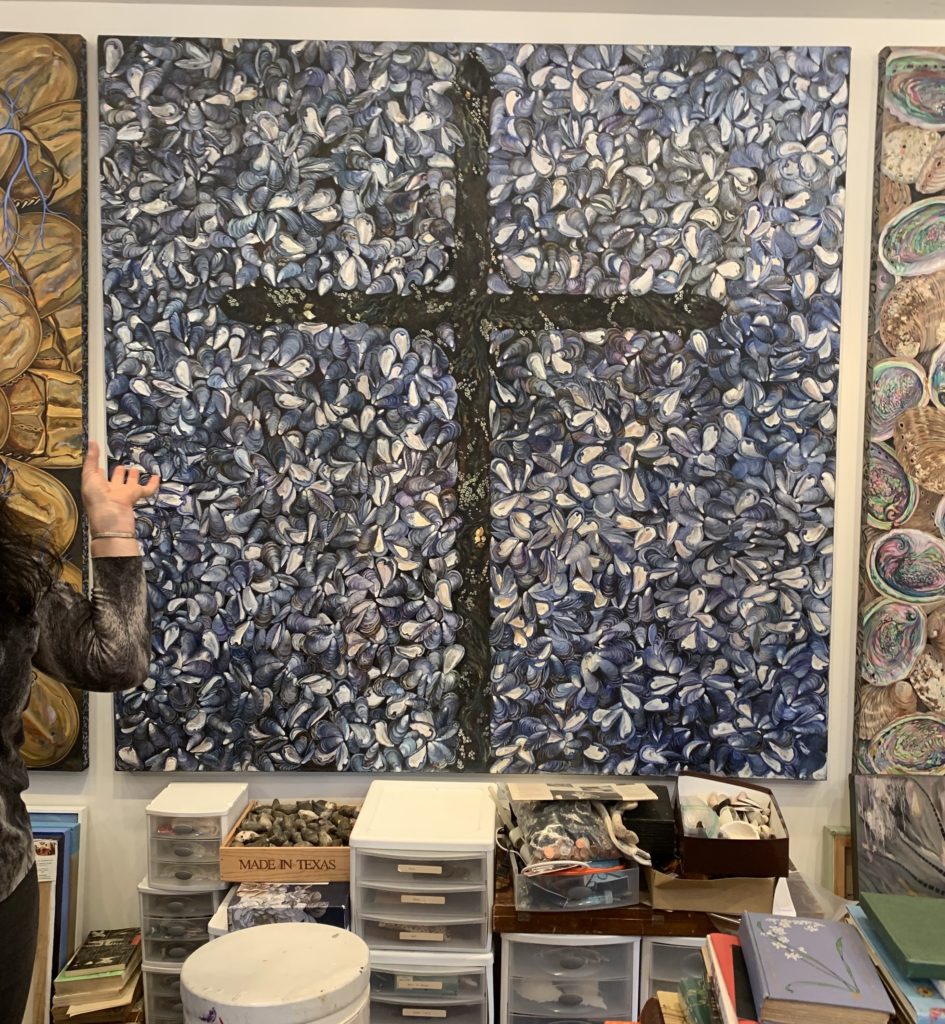
MKM: What has been a seminal experience?
MC: I would say I have two seminal experiences; 1) traveling to Pakistan with Canada World Youth helped me to see myself as a global citizen, to grow in empathy and understanding and perspective, and upon my return, 2) making my home in a small seaside church in rural Nova Scotia, exploring how the impact of culture, history and nature would inspire my art making process, throughout art school and beyond. I carry the influence of these connections in my work and life to this day.
MKM: What art do you most identify with?
MC: Imaginative Realism
MKM: What inspires you? Other artists, other women from history, your process, a theme?
MC: Nature is my primary inspiration, I love to spend time by the sea, hiking in the woods or even in my own garden which attracts many birds and deer, reptiles and insects. I take loads of reference photos and mental notes. I also love antiquing, pondering what these objects can say about who we are. I think combining intriguing objects of our past with nature can make for interesting and even powerful representations, harnessing the power of the familiar but in unfamiliar contexts. Gallery and museum going is also endlessly inspirational, I love learning how other artists have approached their work, and feeling part of this [art] community.
MKM: Do you have a sense of connection to a particular woman artist from art history?
MC: Ha! I am wearing a Frida Kahlo T-shirt as I write this! Frida Kahlo, all day, every day! I love the way she was able to tell her personal narrative through her art in a way that was grounded in her cultural tradition but also universally accessible, using a lexicon of powerful and totemic imagery and color she elevated the personal to the iconic. She painted through pain and love and pain, living her life as art. I draw so much inspiration from her as a person, as an artist and a feminist!
MKM: Is there a specific work from Frida Kahlo that you find interesting?
MC: Self-Portrait with Thorn Necklace and Hummingbird, 1940. I love the direct gaze and all the symbolism she communicates with in this densely packed portrait with its shallow depth of field. I feel her power and passion emanating from this work like an icon.
MKM: As we think about Women’s History Month, who are your female role models from history or present day?
MC: Frida Kahlo, Maria Sibylla Merian, Ayesha Durrani, Malala Yousafzai, Michele Pred, Elizabeth Kolbert, Rachel Carson and Rachel Maddow, Greta Thunberg, Toni Morrison, Ruth Bader Ginsburg, Danielle Krysa, Rina Banerjee, Pantea Karimi, Ana Theresa Fernández and Maude Lewis!

MKM: What’s the best piece of advice you’ve been given?
MC: To follow your passion and to believe in yourself. I know how cliché this sounds, but it takes a lot of dedication and perseverance to be an artist. You must deeply love what you do to stay with it through the struggle of each piece and over the larger arc of finding your voice and developing your process. You must have the confidence that what you find authentically interesting and that which resonates fully in your own heart is worth exploring and will speak to others as well.
MKM: What is your dream project?
MC: I would like to see my Critical Masses paintings on exhibit in sea-side art museums with related sculpture installations and a companion series of speakers addressing ocean health and the importance of biodiversity and sustainability.
MKM: What can we expect from you in the next year?
MC: Melting oysters, a bombardment of barnacles and an abundance of abalone.
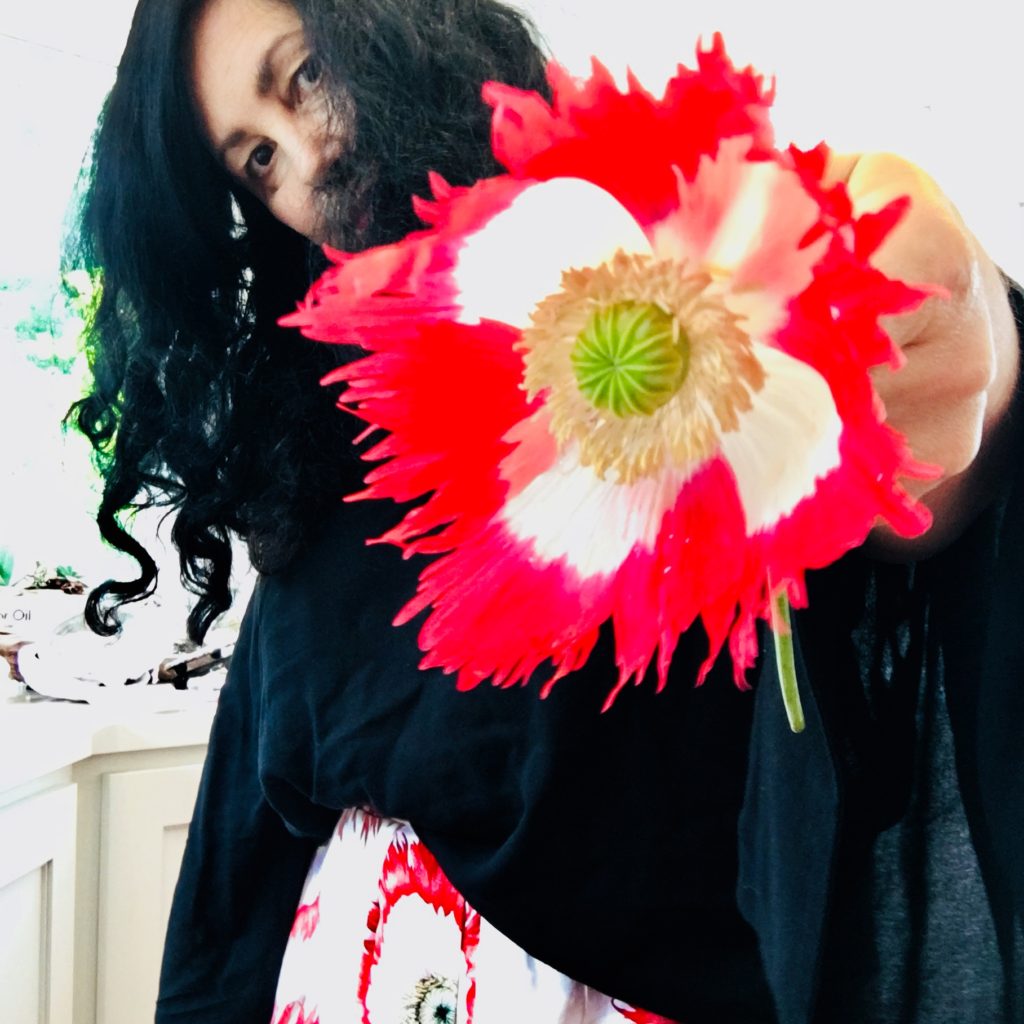
Marie Cameron is currently represented by Curated in Capitola, CA http://mariecameronstudio.com
